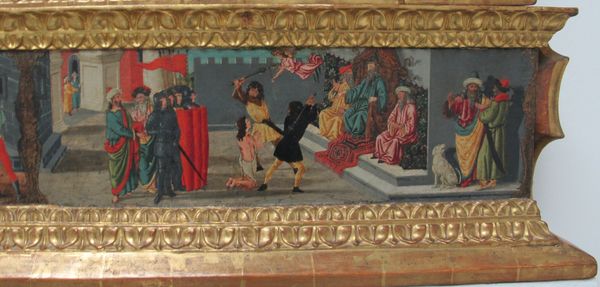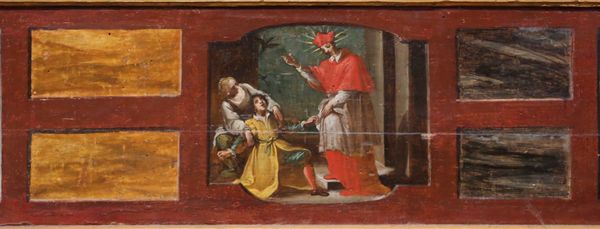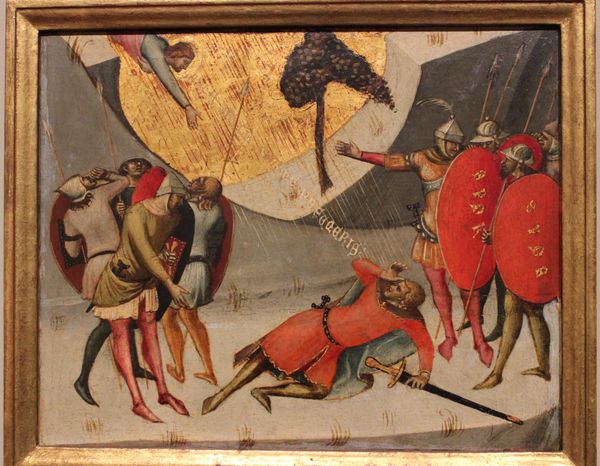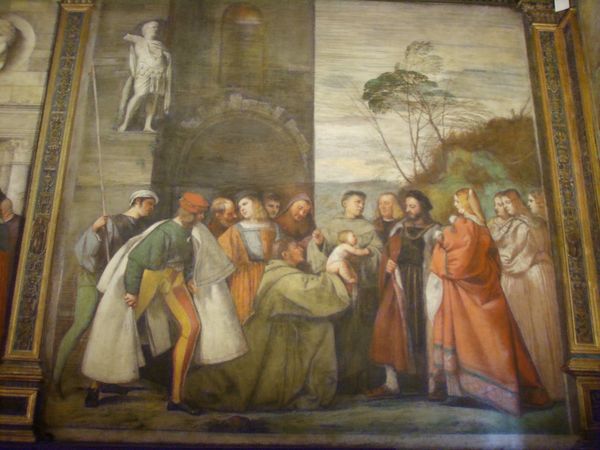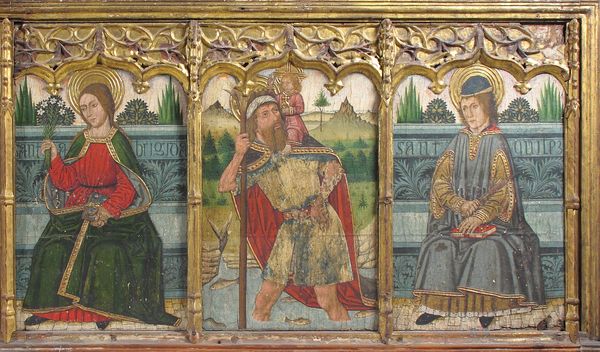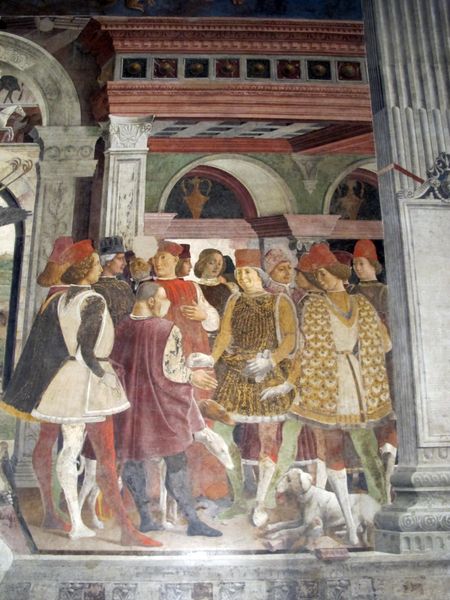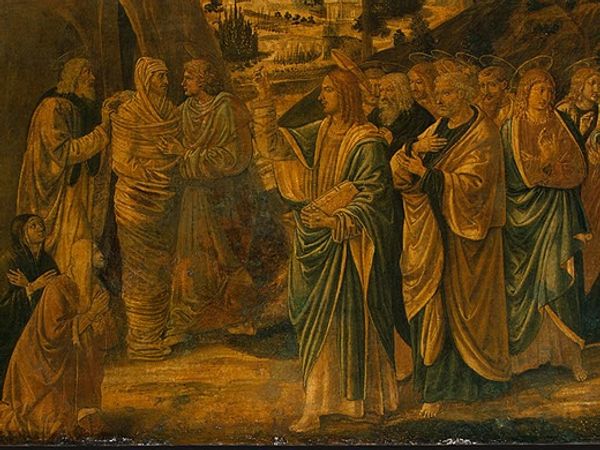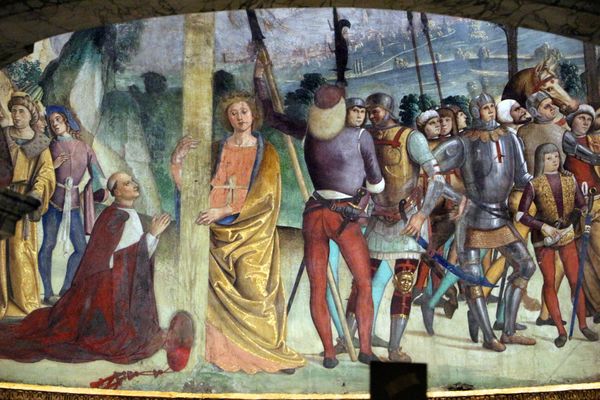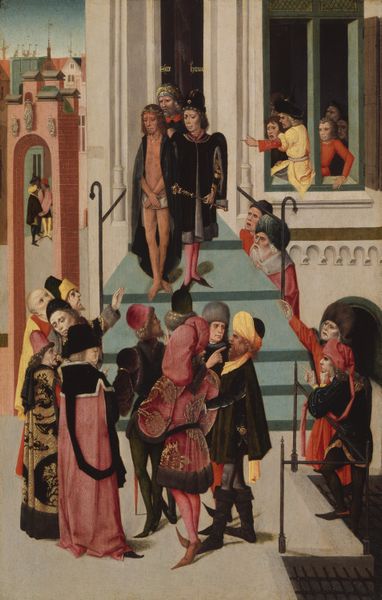
tempera, painting
#
narrative-art
#
tempera
#
painting
#
figuration
#
history-painting
#
italian-renaissance
#
early-renaissance
Copyright: Public domain
Francesco Botticini’s Tabernacolo Di S. Sebastiano presents a complex narrative scene, likely painted in the late 15th century using tempera on wood. The composition is divided into three distinct spaces, each rendered with precise lines and a muted color palette that suggests a contemplative mood. The architectural settings frame the figures, creating a stage-like space for the unfolding drama. The linear perspective directs our gaze across the artwork to connect three narrative segments: the saint's execution, a royal judgement and an exchange of ideas. These divisions invite a semiotic reading of the artwork, where each element – a gesture, a garment, a building – functions as a sign contributing to the story. The architectural space, a key structural element, serves to control the narrative flow and highlight themes of justice, authority, and martyrdom. Botticini uses the interplay of light and shadow to define forms. The painting operates within a framework of established visual codes, yet it also reflects new ways of thinking about space and representation during the Early Renaissance. This interplay between tradition and innovation underscores how this artwork embodies the evolving intellectual climate of its time.
Comments
No comments
Be the first to comment and join the conversation on the ultimate creative platform.
